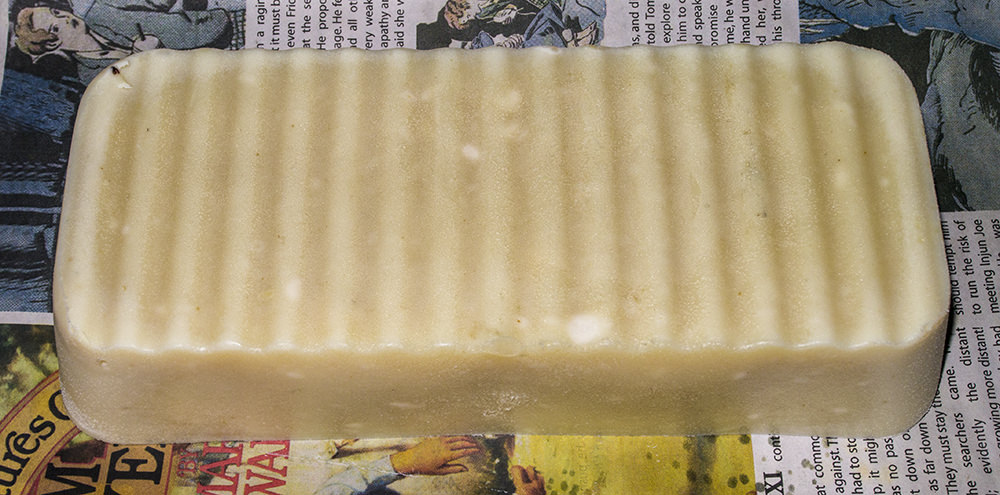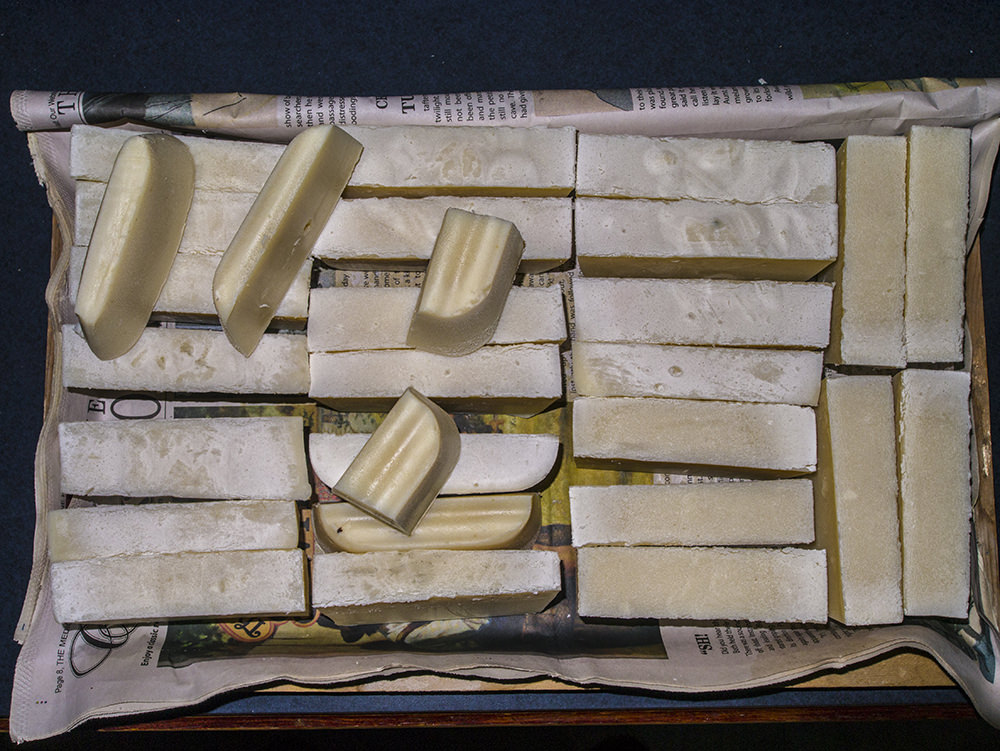New Years supply of Soap 
Was running low so had to make more


Was running low so had to make more






My great grandma used to make her soap using wood ashes. She would run rain water through the ashes very slowly and collect it in a pot. then she boiled the liquid down until it would float an egg. Then it was ready to make soap. She used hog lard to make her soap. She would pour her soap into a wooden box and let it sit to harden up enough to cut into bars. Then she would set the bars on edge with enough space between them to let the air circulate between them. It was tan in color and you had to let it cure until it was through saponifying or it was pretty harsh on your hide. The soap was ready for use when it was hard. She used it for everything from washing your hands, to shampooing your hair, bathing, washing clothes or washing dishes. Many times I have seen her with a bar of her soap in one hand and a butcher knife in the other chipping up the soap to make soap flakes for the washing machine or to wash dishes.
Enter your email address to join: